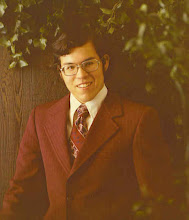Islands, Mike Oldfield (cd) – The perfect music for an “awakening”. The first section sounds like a dawning, the middle consists of soft instrumentals, and finally we reach vocals.
Warner Brothers cartoons – “Fast & Furry-ous,” “Gee Whiz-z-z-z-,“ “”Operation: Rabbit,” and “Hook, Line, & Stinker”. Colorful, loud Roadrunner and Coyote cartoons (“Operation” actually features Bugs Bunny). Easy to follow, no dialogue (except in “Operation”), and, of course, mindless violence.
Life Story, Virginia Lee Burton (jv nature; hereafter LS) – The perfect manual for a newly awakened consciousness. It starts off with a two-page spread of solid black, representing the darkness and emptiness before the universe. On the following pages, a timescale spirals out of the Unknown. “Life Story” touches upon the beginning of the universe, the Sun, the Earth; it shows us the earliest life forms, dinosaurs, Ice Ages, Mankind, and finally ends up on Burton’s back porch at 5:33 AM on May 6. All this in a juvenile book by the author of Mike Mulligan and his Steam Shovel!
Go, Dog, Go!, Phillip D. Eastman – Early reader; I loved all the different-colored dogs and their race cars as a preschooler, and so does Cubby.
One Fish, Two Fish, Red Fish, Blue Fish, Dr. Seuss – Early reader; all the bizarre but friendly creatures are fun to see.
Animal Ghosts, edited by Claudea Clow – More dinosaurs and extinct animals, plus the first touch of cryptozoology with the suggestions that ground sloths, pterodactyls, and the like might still exist!
“Ghidrah, the Three-Headed Monster” poster – Why not? Greatest movie poster I ever saw. Cubby’s now interested in the monsters depicted. They look a bit like the dinosaurs in Life Story to the nth degree.
Kitsune statuette – the pseudo-ivory white fox statue I found, just because it’s pretty.
2000 S Kennedy half-dollar – have a vague idea of getting back into coin collecting. I love half-dollars, and this “Proof” one is so – shiny!
54 holiday snaps – photos from vacation trips, mostly from Farley’s Dinosaur Park in Arkansas. Life-sized concrete dinosaurs, cave men, and bison! Can’t do better than that!
Revolver, the Beatles (cd) – Soft introduction to rock’n’roll.
Classics Illustrated, “Wild Animals I Have Known,” Ernest Thompson Seton – Our first comic book shows more realistic animals. Dogs and wolves mostly, with horses, rabbits, and sheep also seen. The time period is given as the 1890s, and Victorian and cowboy clothing are seen. Prose pages give a bio of Seton, a bio of Francisco Pizarro, and Noah’s Ark from Genesis.
Victory at Sea, “Design for War” – This strange new world isn’t all beer and skittles! War sends many back to that Utter Darkness on page one. Cubby really worries about this Hitler guy.
NASA, “Freedom 7” – humanity tries to reach the stars from which all things spring. Since the date given was twenty years after “Victory”, things must have turned out all right.
Wild Kingdom, “King of the Beasts” – We see real animals here instead of anthropomorphic ones. Cubby sees a bit of the real world. Strangely, while there were narrations for “Victory” and NASA, the first person Cubby actually saw speaking was Marlin Perkins!
Red Skelton, “Lillian Martin,” “Pledge of Allegiance,” “Red at the Reno Rodeo” – A comedy to round off the first day. The “cowboys” here look a bit like the folks in “Wild Animals” – except they dance and sing. “Pledge” makes you proud of these here United States, though Cubby only has a cloudy idea of “nation”.
Observations after a single day: Cubby crammed quite a bit into one day. He has at least a vague idea of the Universe, dinosaurs, real animals, and music (lots in the background of the TV episodes as well as the two albums). Oddly, the first human being he actually heard speak was Marlin Perkins! He understands life and the beginnings of things (like his own slow awakening that morning), and death appeared as soon as Life Story got going (the end of many prehistoric species). Death, as seen in Victory at Sea, he thinks of as returning to that darkness at the beginning of Life Story.
He saw ships, planes, and vehicles in Victory and in NASA. Crowd scenes in both showed him that there are many people out there. Excepting women glimpsed in crowd scenes, his knowledge of the female of the species was limited to a photo (and self-portraits) of Virginia Burton – until we reached the Red Skelton episode with Jane Russell as a Western dance-hall singer! A brother and sister appear in One Fish . . ., so he knows children, too.
He knows there was an “Egypt”, a “Greece”, a “Rome”, and medieval times. Indians appear in a single painting of LS, then come the “settlers”. WWII began in 1939, and Alan Shepherd became America’s first man into space in 1961. Such is his grasp of history.
The World: seen in little globe-maps the size of a quarter in LS. Maps of the Atlantic Ocean seen in Victory, surrounded by lands with names: Canada, Greenland, Iceland, England. World maps seen in the background in NASA and Wild Kingdom. LS exaggerates Massachusetts when we shrink down to see life there – bear that in mind.
Dinosaurs are cool, seen in LS, Animal Ghosts, and “holiday snaps.” The monsters of Ghidrah are dinosaur-like, so he likes them, too. The first glimpse of forteana comes in Animal Ghosts, with the suggestions that some prehistoric creatures might still live – somewhere.
It’s amazing how much literature and media for young children concentrate on funny animals. More serious versions will wait for the future.
Four books read out of 4800 = 1/1200 of the way done!
Subscribe to:
Post Comments (Atom)

No comments:
Post a Comment